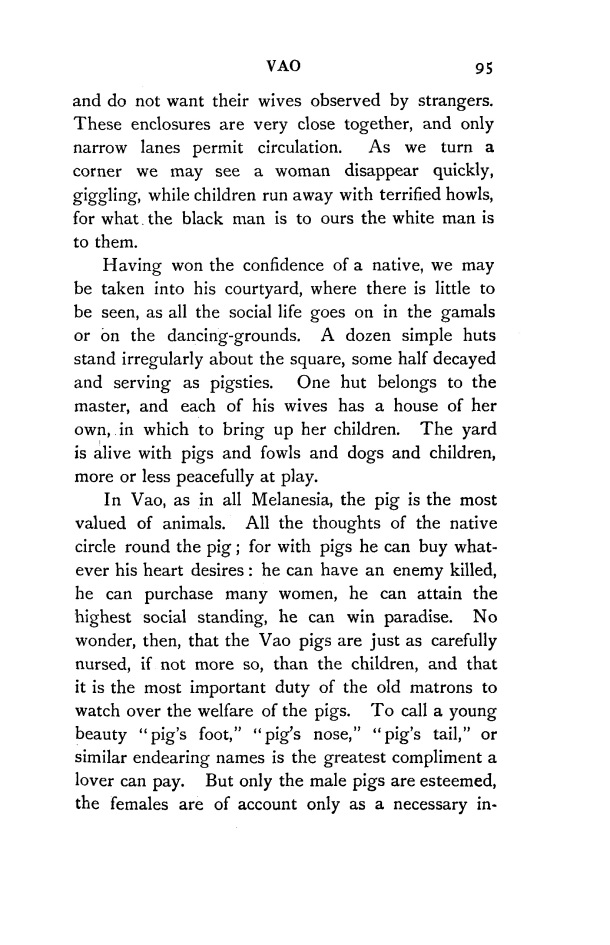|
|  [Note: this transcription was produced by an automatic OCR engine]
VAO 9 5
and do not want their wives observed by strangers.
These enclosures are very close together, and only
narrow lanes permit circulation. As we turn a
corner we may see a woman disappear quickly,
giggling, while children run away with terrified howls,
for whatthe black man is to ours the white man is
to them.
Having won the confidence of a native, we may
be taken into his courtyard, where there is little to
be seen, as all the social life goes on in the gamals
or on the dancing—grounds. A dozen simple huts
stand irregularly about the square, some half decayed
and serving as pigsties. One hut belongs to the
master, and each of his wives has a house of her
own,.in which to bring up her children. The yard
is alive with pigs and fowls and dogs and children,
more or less peacefully at play.
In Vao, as in all Melanesia, the pig is the most
valued of animals. All the thoughts of the native
circle round the pig; for with pigs he can buy what-
ever his heart desires: he can have an enemy killed,
he can purchase many women, he can attain the
highest social standing, he can win paradise. No
wonder, then, that the Vao pigs are just as carefully
nursed, if not more so, than the children, and that
it is the most important duty of the old matrons to
watch over the welfare of the pigs. To call a young
beauty “pig’s foot,” “pig’s nose,” “pig’s tail,” or
similar endearing names is the greatest compliment a
lover can pay. But only the male pigs are esteemed,
the females are of account only as a necessary in—
|